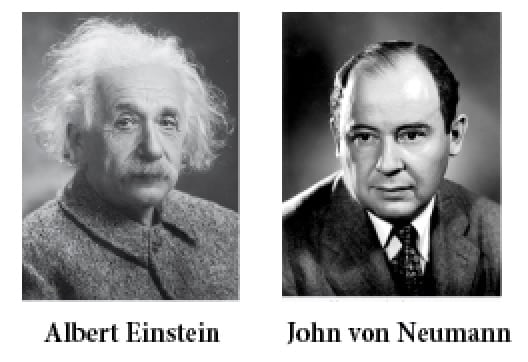
Philosopher Arthur Schopenhauer best captured the difference between high intelligence and genius in his famous quote: Talent hits a target no one else can hit; genius hits a target no one else can see. Newton, Einstein, and Tesla are considered geniuses or “brilliant” because they combined high intelligence with creativity and insight to hit targets that no one else saw. Newton developed the mathematics of rocket science while most humans thought that the sun and the planets were circling the earth. Einstein asserted that time is not absolute and reconceptualized Newton’s gravity as a “curvature” of space. Tesla recognized the superiority of alternating current over direct current and harnessed electrical power. All of these were targets that none of the other highly intelligent people could see. Intellectual brilliance refers to an exceptional level of intelligence, creativity, or cognitive ability that sets an individual apart from their peers. It is often characterized by a person’s capacity for deep and original thinking, problem-solving, and the ability to grasp complex concepts quickly and effectively. Intellectual brilliance can manifest in various forms, including:
• Creative Thinking: Intellectual brilliance is often associated with creativity. Brilliant individuals seem to have a knack for generating innovative ideas, thinking outside the box, and making connections between seemingly unrelated concepts. When Elon Musk envisioned the Tesla car that could travel hundreds of miles in a single battery charge, or the Space X reusable rockets, he reached beyond what was believed to be reachable. Similarly, when Jeff Bezos conceptualized Amazon.com, his vision expanded the envelope of established practices.
• Rapid Learning: Brilliant people learn new information and skills quickly, often with minimal effort. They can excel in various subjects or domains, from mathematics and science to the arts and humanities. Some psychologists believe that this ability derives from a neural efficiency that enables the brain to access information along more direct neural routes to make quicker connections linking concepts.
• Problem-Solving: Intellectual brilliance is often demonstrated through a person’s ability to solve complex problems with ease, using both analytical and creative approaches. This is most evident in fields like mathematics, engineering, or computer science in which the problems are precisely defined. When Andrew Wiles proved Fermat’s Last Theorem and when Grigory Perelman proved the Poincaré Conjecture, they each demonstrated a problem solving ability that had eluded the efforts of many of the brightest minds in mathematics.
• Pattern Recognition: Probably the most overarching cognitive ability evident in brilliant humans is the ability to recognize patterns. English number theorist, G. H. Hardy asserted that mathematics is merely the study of patterns. Mathematics and physics are subjects containing a multitude of interrelated concepts. The ability to identify similar patterns in these structures and relationships requires a high level of pattern recognition enabling the scientist to extract general principles from a multitude of specific cases. It was his ability to generalize thousands of observations of many different species of birds that enabled Charles Darwin to infer his principle of natural selection through survival of the fittest.
• Exceptional Short-Term Memory: Perhaps the most undervalued component of brilliance is the possession of exceptional short-term memory. Anyone who plays chess is aware of the advantage of keeping the potential outcomes of various moves simultaneously in memory. Similarly, the ability to perform any algorithmic skill such as, multiplying two many-digit numbers, is vital to successful execution. The brilliant mathematician John von Neumann at age 6 displayed the ability to divide two eight-digit numbers in his head. A memory of such capability is evident in the world of computers where the capacity to store and access information is vital to information processing.
• Versatility: Brilliance in the humanities and the arts is more difficult to identify because its measure has a more subjective component. However, brilliant people often excel in multiple domains, showcasing their versatility and adaptability. Leonardo da Vinci made exceptional contributions to physiology, sculpting, painting and human flight. Shakespeare, a student of human nature and a brilliant playwright and poet, demonstrated his brilliance in his ability to articulate the deepest elements of human nature in various art forms.
Neurology is at a very early stage in the investigation of intelligence and its connection to brain structure, so at this point our main method for identifying a person’s brilliance is almost exclusively through the observation of their achievement and behaviors. For more information, visit: https://www.intelligence-and-iq.com/whats-the-difference-between-a-highly-intelligent-person-and-a-genius/
